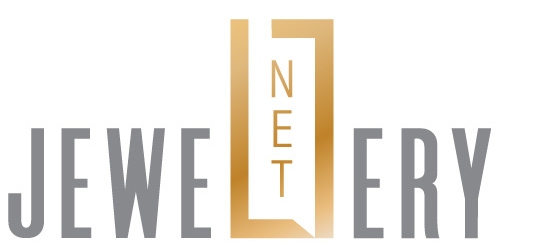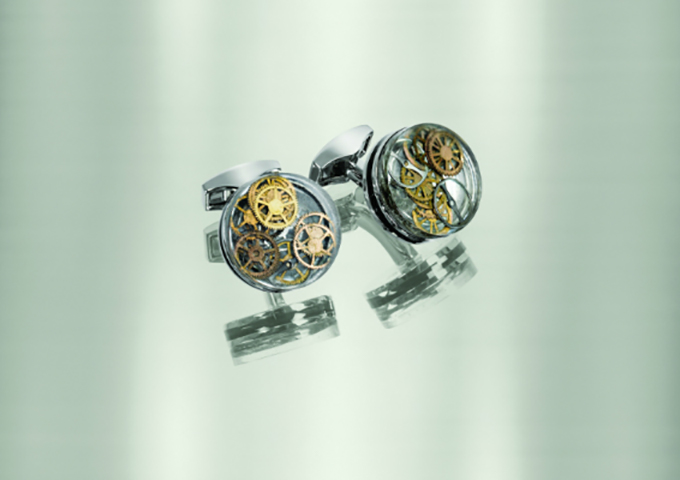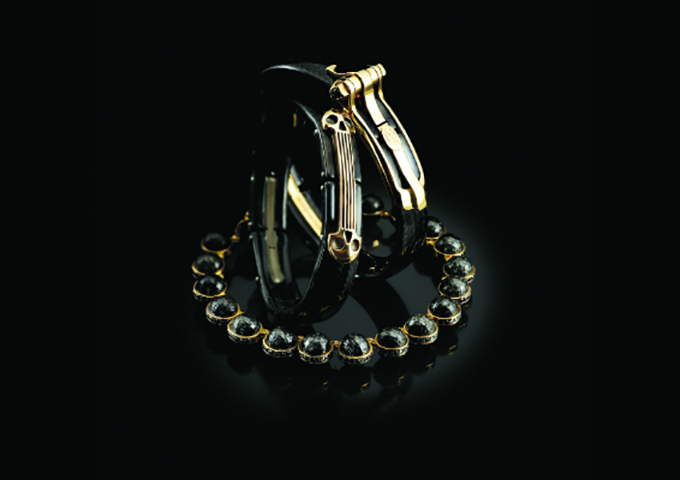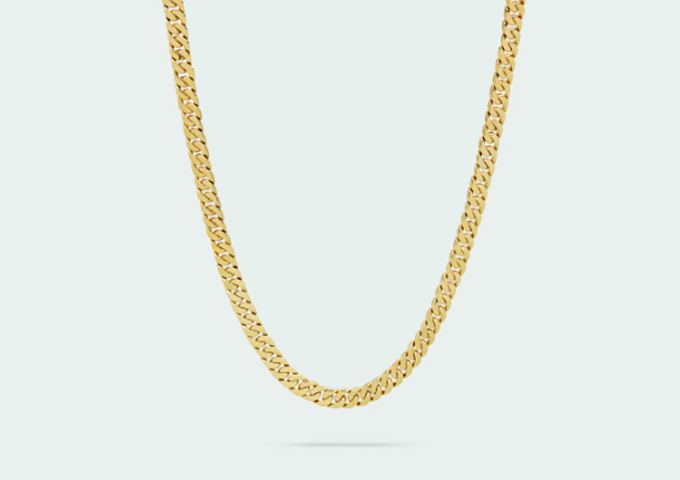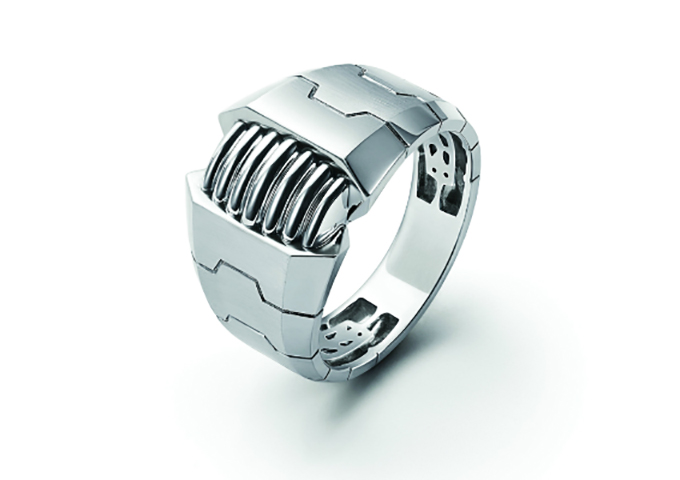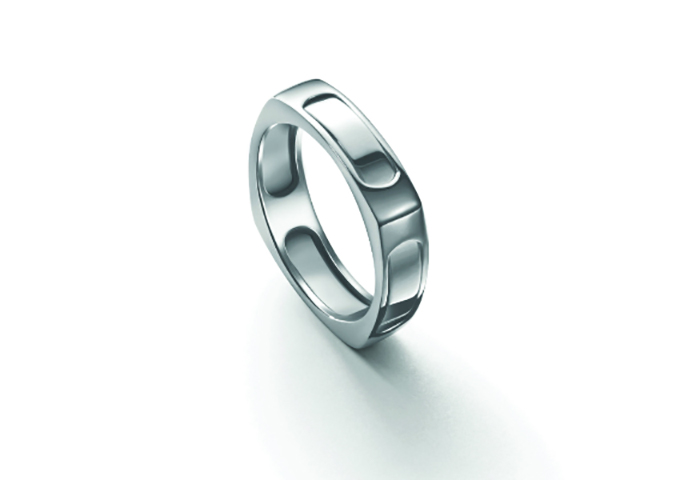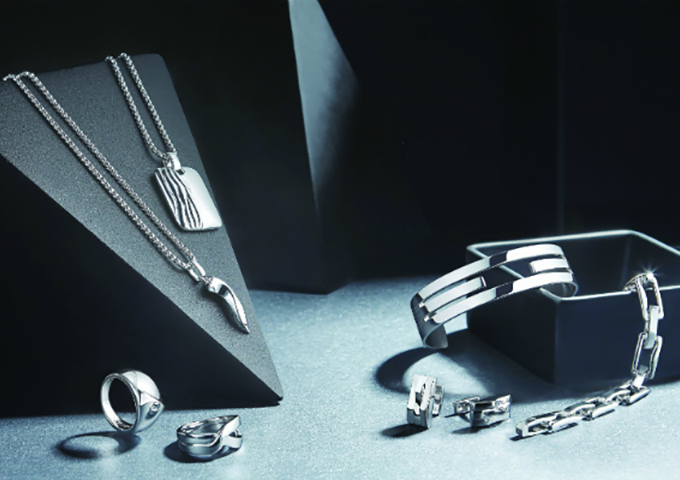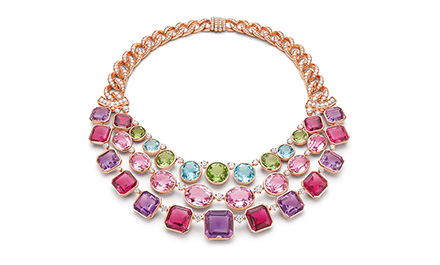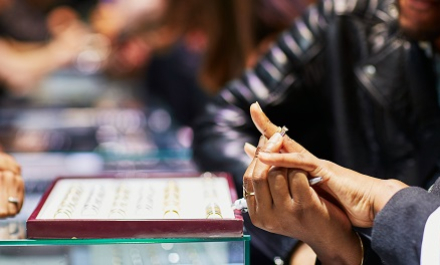History is testament to the use of jewellery by many influential men throughout the ages – from the Maharajahs of India and the Sultans of Asia to the royal families of Europe. Back then, lavish jewellery on male rulers was not only normal but necessary.
The trend however died a natural death, with the gradual abolition of monarchies and the emergence of gender-specific conventions that relegated socially sanctioned jewellery for men to wedding bands and cufflinks.
Fast forward to the 21st century, men are once again adorning themselves with jewellery pieces that are less ostentatious but more expressive and innovative, perhaps reflecting the more contemporary tenets of today’s informed consumer.
Why are more men donning bracelets, brooches, rings, necklaces and even an occasional pair of earrings nowadays?
Jewellers interviewed by JNA attributed this to various developments in modern society including gender-neutral ideologies, the advent of social media and the growing influence of young buyers on how products and services are advertised and bought.
The market in turn has become more receptive to the culture of men accessorising.
It’s a man’s world too
Men are increasingly finding new ways to convey their individuality and one of these avenues is jewellery, according to Robert Tateossian, founder and CEO of his eponymous company, Tateossian.
Alongside this greater freedom of expression are genderless principles that allowed more creative possibilities in industries like fashion, which had an impact on the jewellery sector.
Designs have become more fluid so there’s hardly any distinction between women’s and men’s jewellery anymore, according to Robert. Generation Z consumers also perpetuated this culture by unabashedly adorning themselves with jewellery.
“Gen Z has no attachment to masculine versus feminine concepts. They have no issue with wearing jewellery,” noted Robert.
The growth of social media platforms meanwhile gave buyers instant access to photos of jewellery-clad celebrities, musicians and athletes, among others, further fuelling male audiences’ appetite for accessories.
All these contribute vastly to rising demand for men’s jewellery pieces.
According to French jewellery designer Rémy Rotenier, sales of men’s jewellery have grown steadily since the 2010s, representing a profound change in society, which for the longest time has dictated what men should accessorise with.
Such changes, for the most part, are brought about by young men whose influence on modern consumerism is undeniable. An actual jewellery sale could be triggered by someone seeing his favourite male artist sporting a unique pendant on Instagram, remarked Rotenier.
Inventive and self-assured, millennials and Generation Z buyers prefer companies with a solid brand identity, but they champion budding, artistic designers too. This buyer demographic also identifies with diversity, globalism, ethnic traditions and exoticism, which in turn, inspire their choice of designs, he continued.
Jacopo Sedazzari, CEO of Italian jeweller Sauro, said jewellery has become more accessible “culturally and economically” now as opposed to a time when only men of power and royalty could wear them.
In his jewellery box
When it comes to choosing jewellery pieces, men favour gadget-themed designs and mechanical pieces that remind them of watches, noted Robert.
Among his bestsellers are round and knot cufflinks as well as carbon fibre pieces. Black leather bracelets also move fast, thanks to growing interest in black rhodium plating. Men are likewise stacking their bracelets.
“Unlike women whose taste in jewellery varies depending on the market, men tend to be traditional,” he stated. “They behave in a very similar way. If a design is popular in Japan, then it will also take the US or UK by storm.”
Tateossian’s biggest markets are the UK, the US, Canada, Japan, Germany, Turkey and China.
Men enjoy simple materials such as brushed metals, rough or regular-facetted diamonds, black diamonds as well as gemstones in subdued colours like lapis lazuli, turquoise, opal or malachite, revealed Rotenier, who has created men’s jewellery collections for design house Nambé.
A star sapphire or chrysoberyl cat’s eye occasionally figure in men’s jewellery pieces.
Many customers are partial to sterling silver for its natural elegance and simplicity. A polished, organic look alongside interesting textures, curved edges or angles are popular among men.
Rings are also among the top-performing categories while bracelets in adventurous, never-before-seen designs are likely to become more mainstream. Men’s brooches are gaining steam in the market too.
“Brooches allow designers to create with a high level of detail and personality. They can contain softer stones and more fragile elements, which open doors for greater customisation,” noted Rotenier.
Younger men likewise gravitate towards everyday, statement pieces that they can mix and match. Interestingly, they are not as fond of high-end jewellery as men in their 40s and older, he added.
Young brands
Norwegian lifestyle brand Tom Wood Project is leading a style revolution, fuelled by the new generation’s affinity for functionality, innovation and authenticity. This melds perfectly with the prevailing notion of men increasingly experimenting more with jewellery.
“The fashion choices of new celebrity style icons like Timothée Chalamet and Harry Styles have definitely played an important part in this,” said Mona Jensen, founder and creative director at Tom Wood Project.
Established in 2013, Tom Wood Project designs jewellery pieces with an androgynous appeal. The brand is known for its clean designs in gold or silver, further adorned with natural gemstones.
Jensen recommends rings and bracelets as entry pieces for men who want to start wearing jewellery.
Among the company’s most sought-after goods are signet rings, bracelets, earrings and ear cuffs for men. Chains have also risen in popularity, which could lead to future demand for chunkier, statement chains as seen in Autumn/Winter fashion shows.
Outside of Scandinavia, Tom Wood Project sells mostly to Asia, the UK and the US, with urban men in their late 20s as target audience.
As the company continues to expand its portfolio and clientele, it hopes to further inspire more men to embrace jewellery as a vehicle for expression.
“Jewellery pieces are now offered in almost any fashion store, even for men. Men used to look at jewellery as more feminine objects, but this is no longer the case as traditional ideas fade away,” noted Jensen. “And I hope Tom Wood has been a part of this movement.”
Tom Wood Project is found in over 200 retailers in the UK, the US, South Korea, Hong Kong, China and Japan.
Asian market
India and China are driving the desire for men’s jewellery in Asia, revealed the Platinum Guild International (PGI). According to Tim Schlick, COO of PGI, there is growing demand for men’s jewellery beyond the bridal category among younger generations, fuelled by the need for self-expression, and a way to symbolise their success and social status.
“Different from gold jewellery, which represents wealth, platinum is a modern metal that has built aspiration and relevance among young men through a strong emotional and image-driven equity,” continued Schlick.
The group introduced “Men of Platinum” in India in September 2019 – a campaign aimed at empowering a new narrative on masculinity. Alongside this initiative was the launch of PGI’s first platinum jewellery collection for men.
According to PGI, India has developed a strong appetite for platinum jewellery over the past decade, with demand seeing a compound annual growth rate of eight per cent between 2013 and 2018, making it the fourth-largest and the fastest-growing platinum jewellery market globally.
Chinese men meanwhile are equally becoming more liberated when it comes to adorning themselves with jewellery. Platinum is the second most preferred metal by male consumers after pure gold, especially in Tier 1 cities.
Business potential
Jewellers underscored the importance of digital platforms in bolstering demand for men’s jewellery amid the Covid-19 pandemic.
Robert Tateossian said buyers who are forced to stay home due to extensive lockdown and isolation policies are spending more time online.
“We expect the demand for men’s jewellery to continue to grow, albeit not at the same pace as before,” he noted. “More people will be shopping online because of the lockdown since they would want to treat themselves with jewellery to feel better amid the crisis.”
He also acknowledged a slowdown in the supply side since jewellery manufacturing is mostly done in Italy and China. Selling the merchandise is another potential hurdle after major international trade shows were cancelled or postponed.
Sedazzari of Sauro meanwhile said jewellery as an aesthetic product will always have a following since it appeals to buyers' innermost desire for beauty and fulfilment. He envisions a post-pandemic scenario where designers would introduce fresh, innovative jewellery collections.
Jewellery pieces with a soul or story as well as those that adhere to fair trade and responsible sourcing would continue to attract modern buyers, revealed Rotenier.
Smart designs, collections that pay homage to different countries’ rich traditions as well as cutting-edge creations using experimental materials, and unprecedented forms and effects will similarly be a big hit, particularly among male clients.
“With the rise of social media platforms and easy access to the Internet, men can further refine their tastes,” he added. “It’s only recently in our era that men started being adventurous with their accessories. I’m curious to see where this new evolution will take us.”
